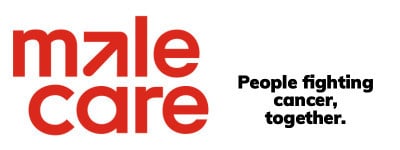Gynecomastica is a taboo subject with many men. Men have a hard enough time talking about prostate cancer, but discussing their breast growth is just too much for many. However, many of us who are treated for prostate cancer experience breast growth, gynecomastica.
Despite how difficult it is to discuss it, gynecomastica is one of the symptoms that most bothers many of us. Besides being uncomfortable, or even painful, it is embarrassing to many of us.
Gynecomastica is not just the providence of men treated for prostate cancer. Newborn babies who are still being influence by their mother’s estrogens, adolescent boys who are experiencing hormone changes, certain illegal street drugs, liver disease, thyroid problems and lung, pituitary, testicular and adrenal cancers can all cause gynecomastica.
Gynecomastica is also caused by certain prescription drugs other than those prescribed for prostate cancer. Steroids, certain ulcer (cimetidine), heart (digitalis) antianxiety (diazepam and tricyclic antidepressants) and epilepsy (phenytoin) treatments can also cause gynecomastica.
Gynecomastica is also a very common side effect of many of the treatments commonly used to treat us, men with advanced prostate cancer. All the antiandrogen drugs both primary and secondary can cause gynecomastica.
Some men have enlarged breasts simply because they are overweight. Gynecomastica is not extra fat tissue, but it is an enlargement caused by the breast’s glandular tissue. This glandular tissue is located under the nipple, not spread around the entire breast as is fat tissue.
The growth of the glandular tissue is directly influenced by the hormones testosterone (and other male androgens) and estradiol (and other female hormones). All humans produce both of these hormones, just at different quantities. In men the androgens are dominate and in women, the estrogens dominate. Estrogens tend to stimulate the growth of breast tissue, so even a slight change in the balance can cause gynecomastica.
There are a number of potential treatments available for men with gynecomastica. Radiation, surgery and taking tamoxifen ( an anti-estrogen drug used in the treatment of breast cancer) all can have the effect of reducing gynecomastica. However, I would urge you to consider passing on all the treatments if you can cope with the gynecomastica. They all are invasive and could cause a host of other negative side effects. Remember, gynecomastica is only cosmetic.
Men do get breast cancer even though the actual numbers are small. We almost never hear about it, but you should remain cautious. Gynecomastica does not increase the risk for breast cancer, but prostate cancer patients have their risk of developing breast cancer doubled. Breast cancer usually, although not all the time, produces a firm, painless lump under the nipple. It is often ulcerated (but not all the time), but bleeding and having a discharge is not common. So, when in doubt do not become modest, see your doctor
immediately. As with prostate cancer, breast cancer has a better chance of being cured with early treatment.
Joel T Nowak MA, MSW

i’m 16 and i have gynecomastica is there any way i can get a treatment that doesnt include surgery. ive had it for 3 years and my GP said it will go in 3 years. at my age it is extremely embarrasing as it is for every man with it. help please?
Greetings! I’ve been reading your site for a long time now and finally got the bravery to go ahead and give you a shout out from Dallas Texas! Just wanted to say keep up the great job!